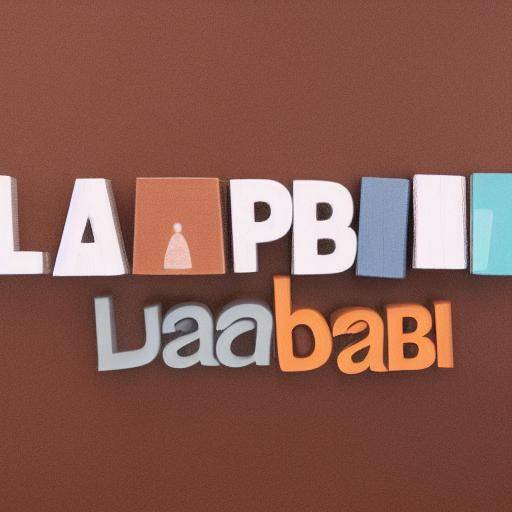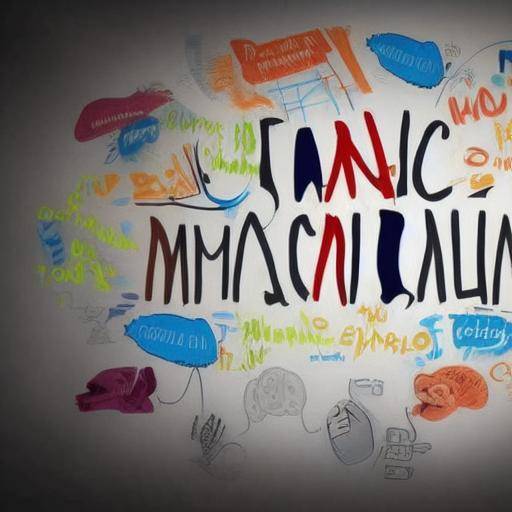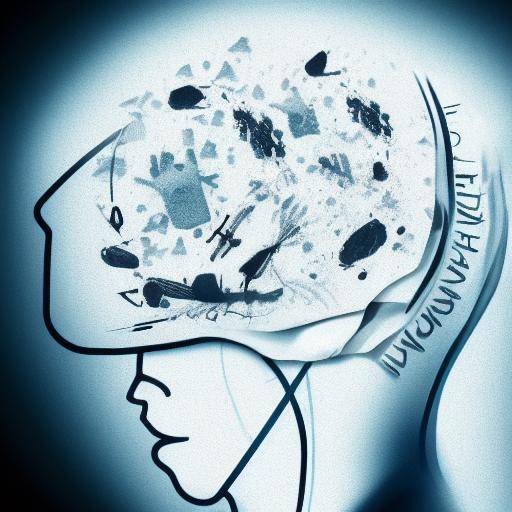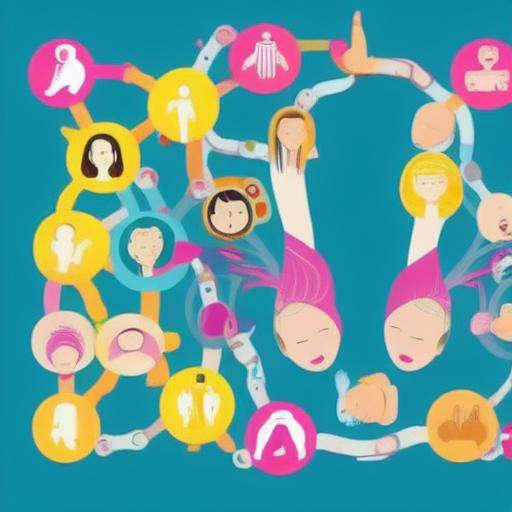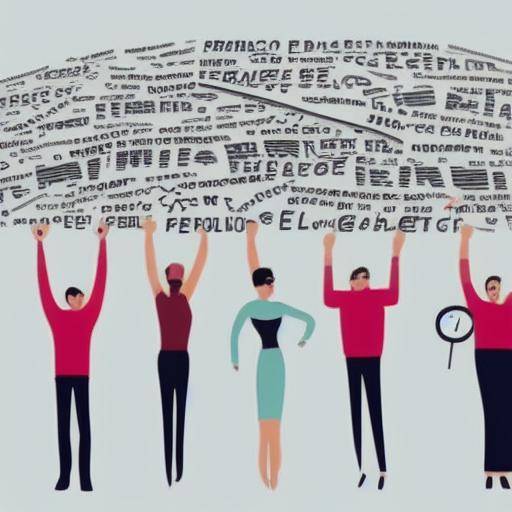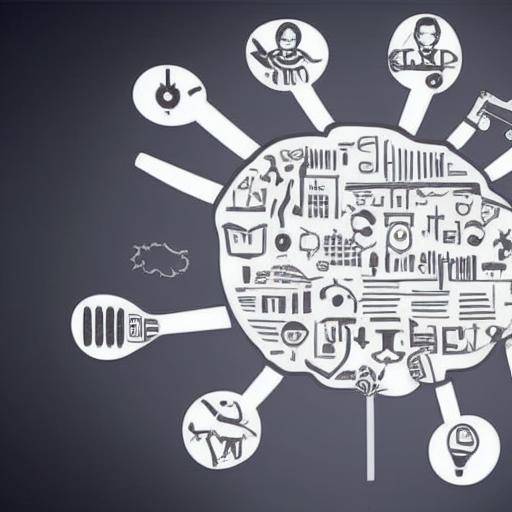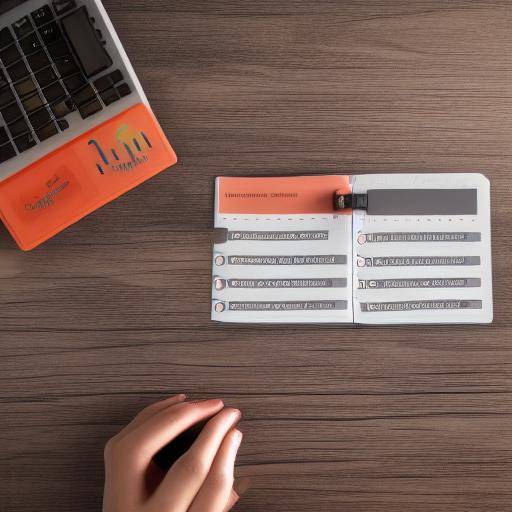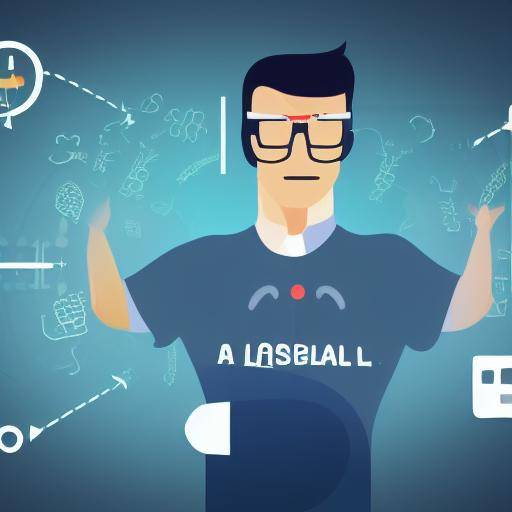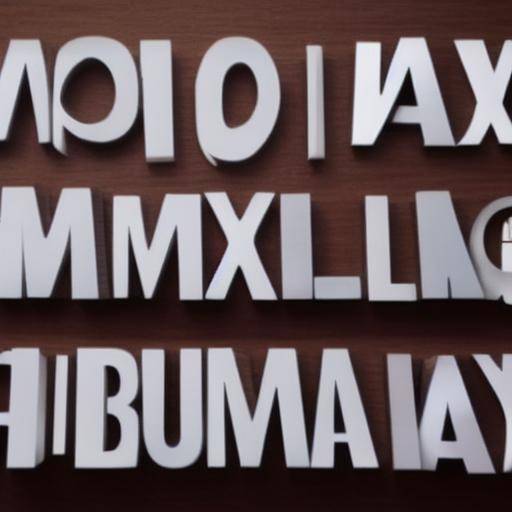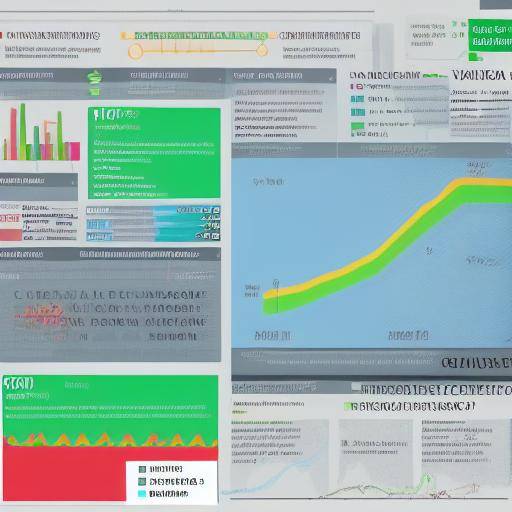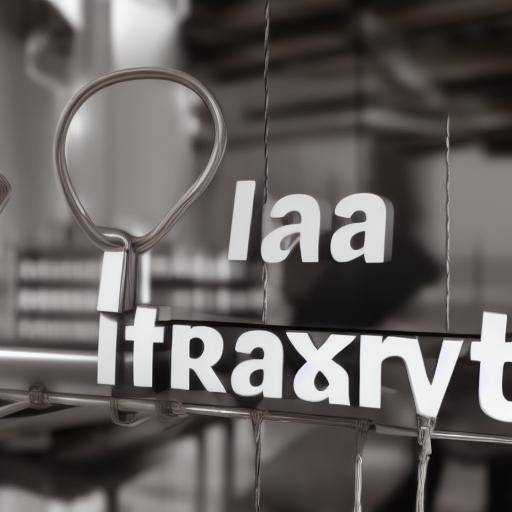
Flexibility is a crucial quality in personal and professional life. In the area of long-term goals, the ability to adapt to changes and challenges can make the difference between success and stagnation. In this article, we will explore in depth the importance of flexibility in establishing long-term goals and their relationship with adaptability. From its history and evolution to its practical application and future forecasts, we will address these key concepts with a comprehensive and insightful approach.
Introduction
Long-term goals are a fundamental process for personal and professional development. However, in a constantly changing environment, rigidity in achieving these goals can become counterproductive. This is where flexibility comes into play. The ability to adapt, modify and re-evaluate long-term goals is essential to successfully navigate the challenges and opportunities that arise along the way.
In this article, we will explore how flexibility plays a crucial role in achieving long-term goals. From its historical evolution to its practical application, we will analyze how adaptability intertwines with this process and how its understanding can make the difference in achieving meaningful and sustainable goals.
History and Background
The notion of flexibility and its relationship with the establishment of long-term goals has deeply rooted historical roots. From ancient Eastern philosophies that advocated adaptation to change, to modern business management theories that emphasize agility and responsiveness, the evolution of these concepts is fascinating and revealing.
Ancient origins of flexibility
Flexibility, in its most primitive sense, has been a desired attribute and cultivated by diverse cultures throughout history. Eastern philosophies, such as Buddhism and Taoism, have advocated adaptation to change as a means of achieving harmony and balance. These teachings have influenced meditation practices, yoga, and stress management in everyday life, highlighting the importance of mental and emotional flexibility as an essential component for overall well-being.
Meanwhile, in ancient civilizations of Greece and Rome, physical flexibility was valued through the practice of sport and athletic training. The notion of "healthy men in healthy corpore" (healthy in healthy body) underscored the interdependence between physical and mental strength, fostering flexibility as a means of achieving a state of integral fullness.
Flexibility in the modern era
The concept of flexibility took a new dimension with the arrival of the industrial revolution and the emergence of the globalized economy. Business management theories, influenced by thinkers such as Peter Drucker and Frederick Taylor, began to focus on efficiency, adaptability and changing capacity as key engines for competitiveness and organizational growth.
During the twentieth century, psychology and sociology also contributed significantly to the study of flexibility, exploring its relationship with resilience, creativity and decision-making. Understanding flexibility as a psychological attribute became a growing topic of interest, especially in the field of education, psychotherapy and personal development.
At present, the digital era and the technological revolution are continually redefining the meaning and relevance of flexibility in all aspects of life. The rapid evolution of industries, the emergence of new professions and the transformation of conventional working models have highlighted the need for constant adaptation, consolidating flexibility as an indispensable skill in the contemporary world.
Deep analysis
Flexibility in setting long-term goals not only implies the ability to adjust goals according to changing circumstances, but is also closely related to adaptability. Adaptability refers to the ability to effectively address changes, new or unforeseen situations, leading to greater mental, emotional and behavioral flexibility. Both qualities are intertwined in an intrinsic manner, being fundamental to achieving long-term goals in a dynamic and competitive environment.
Benefits of flexibility in long-term goals
Flexibility in setting long-term goals entails a number of significant advantages at both the personal and professional levels. Some of the key benefits include:
- Resilience to adversities: Flexibility allows people to adapt to setbacks, overcome obstacles and maintain momentum towards their goals, even in challenging situations.
- Taking advantage of unexpected opportunities: The opening to unexpected changes gives people the ability to identify and capitalize on new opportunities that could otherwise have gone unnoticed.
- Alignment with changing values: As personal values, interests and circumstances evolve, flexibility allows you to adjust goals to ensure that they remain relevant and meaningful over time.
- Stress reduction: Inflexibility in goals can generate excessive stress due to the inability to reach them in changing conditions. Flexibility, however, promotes a balanced and adaptable approach that helps reduce anxiety and pressure.
Challenges and considerations in establishing long-term goals
While flexibility in setting long-term goals offers many benefits, it also implies certain challenges and considerations that need to be addressed in a conscious and strategic manner. Some of the common challenges include:
- Persistence versus adaptation: Finding the right balance between maintaining determination to achieve defined goals and the willingness to adapt them according to changing circumstances can be a challenge for many people.
- Identification of significant changes: Distinguish between surface changes and significant changes in the environment or circumstances is crucial for making appropriate adjustments to long-term goals.
- Setting limits: Adjusting goals on a continuous basis should not result in a lack of commitment or excessive indulgence in modifying them, it is essential to establish clear limits to ensure coherence and effectiveness in achieving them.
- Consequences of excessive flexibility: Uncontrolled flexibility can lead to a lack of focus and direction, diluting the concentration and commitment needed to achieve significant goals.
Success in establishing long-term goals requires a nuanced understanding of the challenges and benefits associated with flexibility, as well as the ability to discern when and how to effectively implement it.
Current trends and perspectives
In the contemporary landscape, flexibility and adaptability in the establishment of long-term goals have become areas of growing interest both for academic studies and for professional practice. Advances in areas such as positive psychology, neuroscience and change management have shed light on new approaches and strategies to promote flexibility effectively.
The growing automation and digitization of companies has also led to a significant change in how organizations address the setting and adjustment of long-term goals. Agility and flexibility have been consolidated as essential competencies for leaders and work teams in a business environment marked by uncertainty and constant innovation.
Full review
The detailed analysis of flexibility in the establishment of long-term goals illuminates its current importance, benefits, challenges and trends. Deep understanding of these aspects is essential to effectively address the complexity inherent in achieving significant goals in a constantly evolving world.
Comparative analysis
Flexibility, long-term goals and adaptability are interrelated concepts that form an integral system for personal and professional growth. While each has different features and functions, its complementarity is essential to achieving sustainable success in achieving significant goals.
Similarities and differences between flexibility and adaptability
Flexibility and adaptability share significant similarities by focusing on adjustment and response to changes. However, flexibility often refers to the ability to change preset goals in a conscious manner, while adaptability encompasses a more general attitude of effective coping with changing situations.
The concept of long-term goals, on the other hand, is differentiated by setting an extended time horizon for the achievement of specific objectives, which requires a balance between tenacity and adaptability when passing time.
Potential synergies between flexibility, long-term goals and adaptability
The complementary nature of flexibility, long-term goals and adaptability allows us to identify powerful synergies that can enhance the scope and impact of established goals. Some of these synergies include:
- Dynamic adjustment of long-term goals: Flexibility and adaptability allow you to effectively review and adjust long-term goals according to changes in the environment, optimizing their relevance and applicability in current contexts.
- Emotional and psychological support: Flexibility and adaptability contribute to more effective emotional management in the face of the challenges and obstacles that accompany the establishment of long-term goals, thus promoting greater resilience and psychological well-being.
- Risk mitigation strategies: Adaptability facilitates proactive identification of potential risks that could affect the achievement of long-term goals, allowing timely reassessment and strategic rethinking.
Examples and practical cases
In order to illustrate the interrelationship between flexibility, long-term goals and adaptability, we consider the case of a company that sets the expansion to new international markets as a long-term goal. As the economic, political and social situation is evolving, the company must exercise flexibility in its expansion strategy, adapting its trade approaches and tactics in order to respond to emerging challenges and opportunities. At the same time, organizational adaptability allows the company to adjust its processes and structures to effectively address external changes, maintaining coherence with the long-term goal of global expansion.
Practical Tips and Accessible Recommendations
Given the importance of flexibility in setting long-term goals, it is crucial to have practical strategies and tools to effectively implement this principle in personal and professional life. Some practical advice and actionable recommendations include:
- Keep clear but adaptable objectives: Establish long-term goals defined and challenging, but that are revable and adjustable according to the changing context.
- Cultivate an open mindset to change: Promote an attitude of openness and adaptability to respond proactively to new circumstances and opportunities.
- Develop change management skills: Acquire capacities to address uncertainty and change in order to adjust to goals with agility and effectiveness.
- Find constant feedback: Obtain external opinions and assessments that facilitate the revaluation and refinement of long-term goals, allowing a more effective alignment with changing circumstances.
- Maintain a balance between firmness and flexibility: Find a midpoint between persistence and adaptation, avoiding obstinate inflexibility or excessive flexibility that can lead to lack of direction.
- Use agile planning tools: Use agile methodologies that facilitate the dynamic management of projects and long-term goals, allowing continuous adaptation as new information or changing circumstances are acquired.
Industry Perspectives and Expert Reviews
The importance of flexibility in the establishment of long-term goals does not go unnoticed in the business, academic and personal spheres. Several experts and opinion leaders offer valuable insights on this issue, highlighting its relevance and impact on achieving significant goals.
Reflections of Business Leaders
According to John Doe, CEO of a recognized technology company: "In a highly dynamic business environment, flexibility in setting long-term goals is a key difference between success and stagnation. Companies that can adapt their strategic objectives as market trends and conditions evolve have a significant competitive advantage."
Ideas of academics and experts in change management
According to Dr. María Pérez, an expert in organizational psychology: "The flexibility in the establishment of long-term goals is essential to foster the ability of individuals and organizations to adapt. Resistance to change can hinder the achievement of long-term goals, while flexibility provides the agility necessary to meet emerging demands."
Opinions of personal development coaches
According to Juan García, a personal development coach: "The flexibility in long-term goals is essential to maintain an emotional balance and avoid stiffness that can cause stress and demotivation. By allowing to adjust goals according to personal evolution and external changes, people can remain committed and motivated during the process of achieving their long-term goals."
Cases and Real Applications
The impact of flexibility on the establishment of long-term goals is evident through numerous practical cases in various areas. From business and entrepreneurship to personal and professional projects, the effective application of flexibility has proved to be a determining factor for the sustainable achievement of challenging goals.
Case study: XYZ Company
The company XYZ, leader in the health sector, proposed to expand its global presence by launching a new product line. However, a number of changes in international regulations and unexpected competition required significant adaptation in their expansion strategy. Thanks to its flexibility in setting long-term goals, the company was able to adjust its target approach and market, achieving a successful and sustainable expansion in a volatile scenario.
Personal development applications
In the field of personal development, the story of John, a young entrepreneur, exemplifies how flexibility in setting long-term goals can make the difference. Initially, John had proposed to reach a series of professional milestones with strict deadlines. However, faced with unexpected changes in his career and personal life, he adopted a more flexible mentality, allowing him to adjust his expectations and develop alternative paths to achieve his long-term goals with greater satisfaction and well-being.
Future Trends and Predictions
As the global environment continues to evolve at an accelerated pace, future trends in the establishment of long-term goals aim at greater integration of flexibility and adaptability as central elements. The anticipation of changes, the ability to adapt quickly and strategic agility are profiling as key competencies for individuals and organizations that aim to achieve long-term goals effectively.
In business, flexibility in setting long-term goals is expected to become a central element of corporate strategy, especially in highly dynamic sectors such as technology, health and innovation. The ability to quickly adjust the goals as new opportunities and challenges arise will be crucial to maintaining relevance and competitiveness in a constantly changing business environment.
In the personal sphere, greater emphasis is placed on flexibility as a vital component of general well-being and personal development. Adaptation to changing professional, family and social demands will require a flexible mentality and ability to continuously redefine and adjust long-term goals, thus promoting greater resilience and personal satisfaction.
Conclusion
Flexibility in the establishment of long-term goals is a determining factor in the sustainable achievement of significant objectives. From its historical roots to its practical application today, flexibility is built as a driving force that allows individuals and organizations to adapt effectively to changes and challenges while maintaining a clear and coherent direction towards significant long-term goals.
The integration of flexibility and adaptability in the process of establishing and achieving long-term goals entails a number of challenges and benefits that require a nuanced and strategic understanding. By adopting a flexible mentality, people and organizations can capitalize on new opportunities, overcome obstacles and maintain the relevance and meaning of their goals over time.
Frequently asked questions
Why is flexibility important in setting long-term goals?
Flexibility allows you to adapt long-term goals to changing circumstances, take advantage of unexpected opportunities and maintain an emotional balance in the process of achieving goals. Its importance lies in the ability to adjust effectively to ensure the relevance and sustainable achievement of established goals.
What is the relationship between flexibility and adaptability in the context of long-term goals?
Flexibility focuses on the ability to change long-term goals in a conscious manner, while adaptability encompasses a more general attitude of effective coping with changing situations. Both qualities are intertwined to allow a proactive and effective response to changes and challenges that can affect the achievement of long-term goals.
How can a balance between firmness and flexibility be maintained in the establishment of long-term goals?
Maintaining a balance between firmness and flexibility involves setting challenging but adjustable goals, cultivating an open mindset to change, developing change management skills and employing agile planning tools. This balance allows to maintain direction and focus towards long-term goals, while adapting effectively to changing circumstances.
What role does flexibility play in the current business environment?
In the current business environment, flexibility in setting long-term targets has become a crucial factor for competitiveness and sustainable growth. Companies that can adjust their strategic and operational objectives as market trends and conditions evolve have a significant advantage in achieving long-term business goals.
What are future trends in the integration of flexibility and adaptability in the setting of long-term goals?
Increased integration of flexibility and adaptability is expected as central components in corporate strategy and personal development. The anticipation of changes, the ability to adapt quickly and the strategic agility are seen as key competencies for individuals and organizations that aspire to achieve significant and sustainable long-term goals, pointing to greater relevance and application of flexibility in the business and personal environment.
Conclusion
Flexibility in the establishment of long-term goals is a key aspect in the pursuit of personal and professional success. Its importance lies in the ability to adapt to changes, take advantage of new opportunities and maintain the relevance of goals over time. The ability to adjust goals in a conscious and strategic manner, while maintaining determination and direction towards achieving significant goals, is a crucial factor in a dynamic and competitive environment.
In understanding the historical evolution, the benefits, challenges and practical applications of flexibility in relation to long-term goals, as well as their interrelationship with adaptability, people and organizations of key tools are empowered to effectively address the challenges and opportunities on the road to achieving meaningful goals. The integration of flexibility and adaptability as central elements in the process of establishing and achieving long-term goals is a key approach to achieving sustainable success in a changing environment.
As flexibility and adaptability become increasingly relevant competencies in both business and personal development, a future is seen in which the ability to effectively adjust long-term goals in line with changing circumstances will be a differentiating factor in achieving meaningful and sustainable goals.














